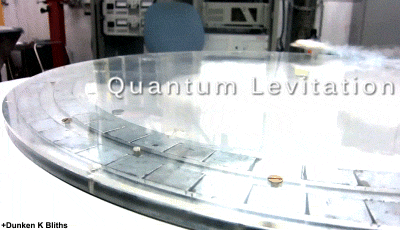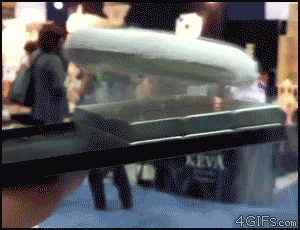What realistic mechanism could be utilized to allow my drone to hover and move around in a visually pleasing and non distracting way?
I am currently working on a short sci-fi film, which, among other things, includes maintenance drones that will be present on a space ship. My goal is to have a fair amount of realism. (There are certain things, like FTL and ship-wide artificial gravity that will be hand-waved, but besides that I want to incorporate as much science as possible.) The drones are designed to operate on a civilian transport ship (basically a combination of a cruise ship and a commercial airplane) where they provide repairs, aid passengers, and just generally maintain the ship. (They do also happen to be useful for taking care of unwanted guests, if you catch my drift...) They need to be able to move freely anywhere in the ship, at any height, and at a relatively fast speed, while still looking cool and not being extremely distracting, without any obtrusive propellers or exhausts, using a scientifically plausible method of propulsion.
The Drone:
The main body is round, about the size of a basketball, and made of some kind of durable composite. I don't have any particular material in mind, so feel free to use what every might be necessary. The bottom half of the drone has multiple mechanical arms, (most likely 2 - 4) with different tools and gadgets. This is also where I assume the hovering system would be located. The top half has various sensors and lights. The exact weight isn't important, but it should be enough to make a sizable clank when it hits the ground.
The Ship:
The exact details of the ship shouldn't be too important, but here is some basic information. The ship is around 0.5km tall, and 2km long. Of course, not all of this will be habitable, but there is still more than enough space for hundreds of drones to be at work. Any area inside the ship will have near perfect artificial gravity, and otherwise be identical to earth as far things like air pressure and temperature are concerned.
Specifications:
Here is a list of all the requirements the propulsion system should meet. Some exceptions can be allowed, but the system should be as close as possible to these specifications.
- The drone should to be able to hover in place for at least a 30 seconds.
- It should be capable of traveling at least 20mph, although 50mph would be more desirable.
- It needs to be maneuverable and capable of quickly changing direction.
- It needs to be capable of functioning in the ideal conditions for human habitation. (As in: temperature, atmosphere, etc.) The ability to operate at higher temperatures would also be welcome.
- It has to be safe to use around humans; no radiation or excessive heat.
- It needs to be usable in close proximity to at least 3 other drones using the same system. (Ideally there should be no limit.)
- It should be able to move freely anywhere on the ship, without being confined to certain areas. If a specific component is required in the drone's environment, it has to be easily implementable throughout the ship.
- It needs to be quiet. Some small, sci-fi-y noise is acceptable, but nothing that will drown out any dialogue.
- It can't be bright or distracting. It's fine if there is no visual indication of any propulsion, but it would certainly be nice if it had some cool effects. (I will be animating this.) There can be no huge rocket thrusters, or propellers. This isn't a quadcopter. Something small, that's visible but not eye-popping would be ideal.
Some things to note:
- The ship itself may have artificial gravity, but this can not be utilized for the drone. (The idea is that the ship has some gigantic power source, unlike the drone.)
- The drones will also operate outside the ship in the vacuum. Some simple RCS thrusters should suffice, but it would be a bonus if the mechanism also works in space.
Is there a plausible propulsion system that suits my needs?


